目次
ポーランド入国とクラクフ散策~旧市街とユダヤ人地区の街並み 僧侶上田隆弘の世界一周記―ポーランド編①
4月12日。
ぼくは今、ポーランドのクラクフという街に来ている。
クラクフはポーランド南部の都市で、聖マリア教会を中心とする旧市街はコンパクトにまとまって非常に観光しやすい街として知られている。
クラクフは11世紀中ごろから16世紀末までポーランド王国の首都として栄え、プラハやウィーンと並ぶ文化の中心だった街だ。
そして、ポーランドの首都ワルシャワが東京に例えられるのに対して、このクラクフは京都に例えられる。
第二次世界大戦ではワルシャワがナチスによって壊滅させられたのに対し、クラクフは奇跡的に破壊を免れた。
そのため中世からの古い町並みが現在も残っているというわけだ。

ホテルから出るとそこはすぐに色とりどりなヨーロッパらしい建物が並んでいる。
残念ながら小雨がぱらついている。
そしてものすごく寒い。5度にも満たない気温だ。
吹き付ける風が体を凍えさせる。
強烈な日差しと25度近くあったイスラエルとの差が心底身にこたえる。
だが、そんなどんよりした東欧クラクフの街並みも、それはそれでなんとも味わい深い。
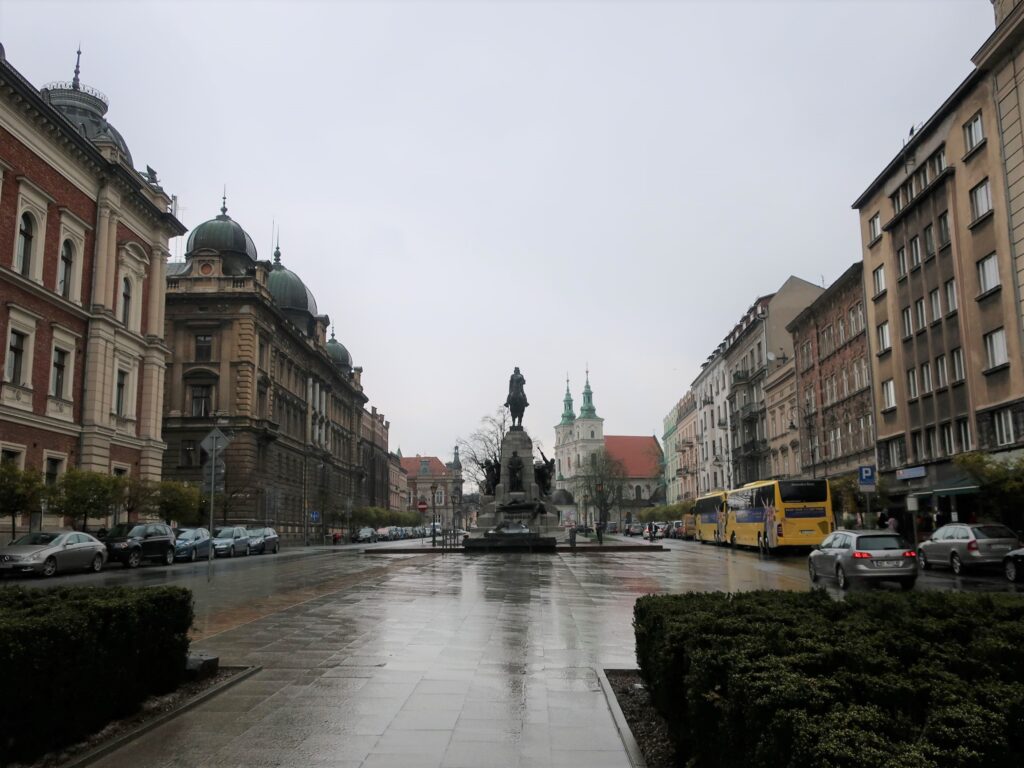
こういう広場を目にすると、ヨーロッパにいることを感じさせられる。
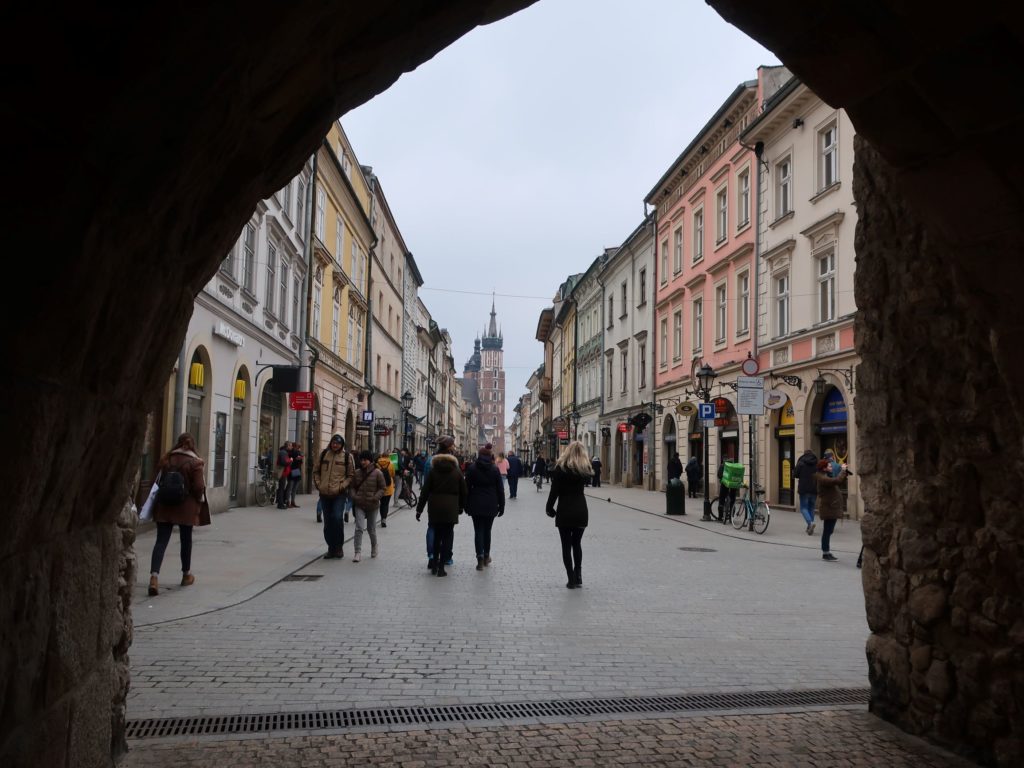
旧市街の入り口からその街並みを見渡す。
ヨーロッパの古い町並みがここには残されている。
歩きながらぼくは思う。
「この街・・・いいな・・・」
はっきりしたことはわからないが、この街、なんとも絶妙なのだ。
まず、中世の街並みが美しい。
そして現代の生活ともうまく融合している。つまり、便利で快適。
さらに清潔。ごみもほとんど落ちていない。
おまけに、静かで落ち着いた街の雰囲気。
少し散歩しただけで自然と笑みがこぼれるような、そんな街だった。
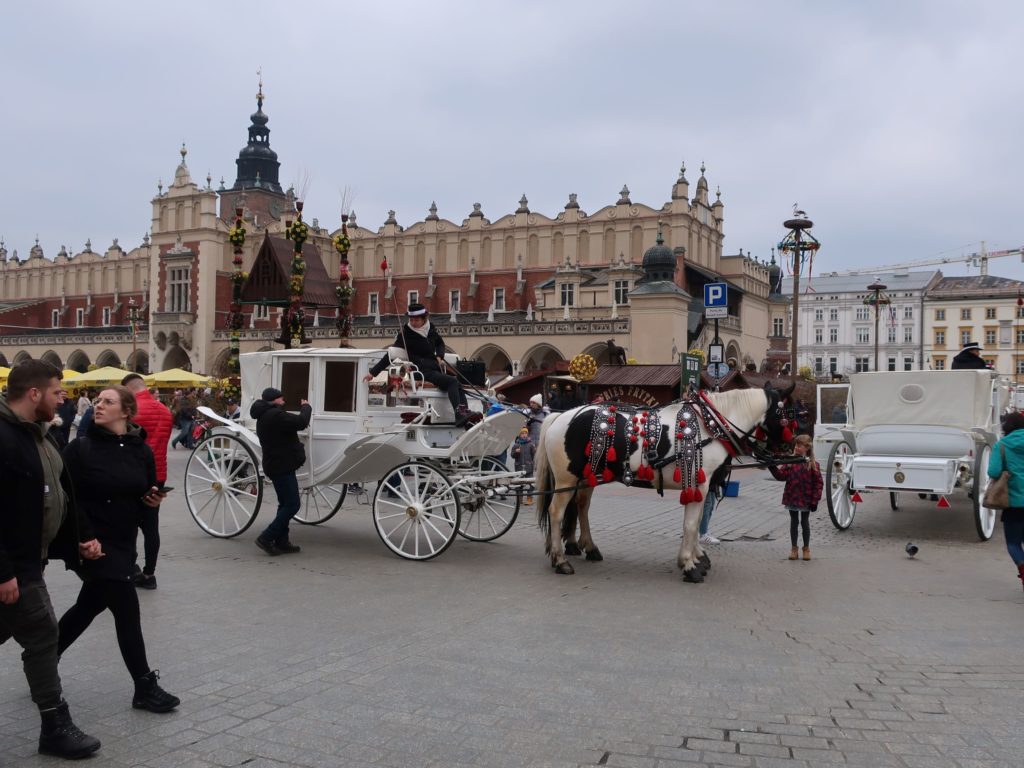
旧市街の広場まで来た。
なんとそこには馬車が行列をなしていた。
どれも立派な馬であり、堂々たる迫力。
石畳を闊歩する蹄の音が広場に響きわたる。

これが旧市街の中心、聖マリア教会。
この教会については次の記事でご紹介する。
さて、旧市街を抜けて今度はカジミエシュ地区と呼ばれるユダヤ人街へと向かっていく。
クラクフには多くのユダヤ人が戦前まで暮らしていた。
しかしナチスドイツによるホロコーストでその生活も終わりを迎える。
映画『シンドラーのリスト』の舞台になったのもこの街だ。
そして戦後、ユダヤ人街だったこの街には住む人もいなくなり荒廃していたそうだ。
しかし現在、おしゃれなカフェやショップが軒を連ねるようになり、若者が集まるスポットとして生まれ変わっているとのこと。
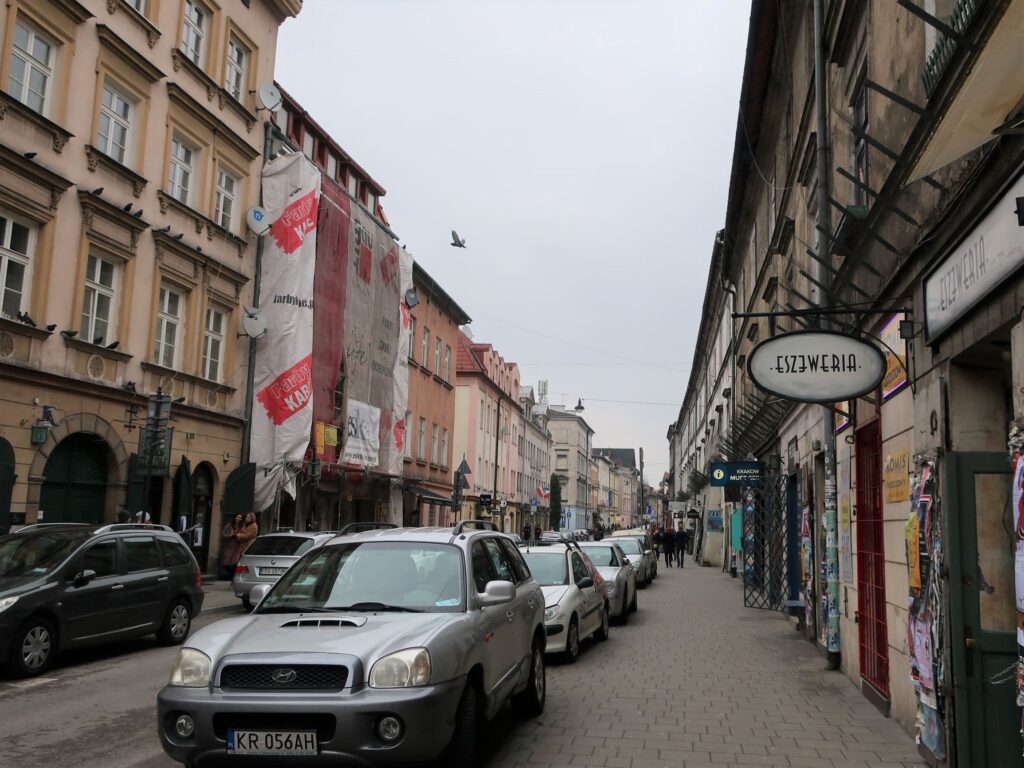
歩いてみると、たしかにカフェやショップが多いことに気づかされる。
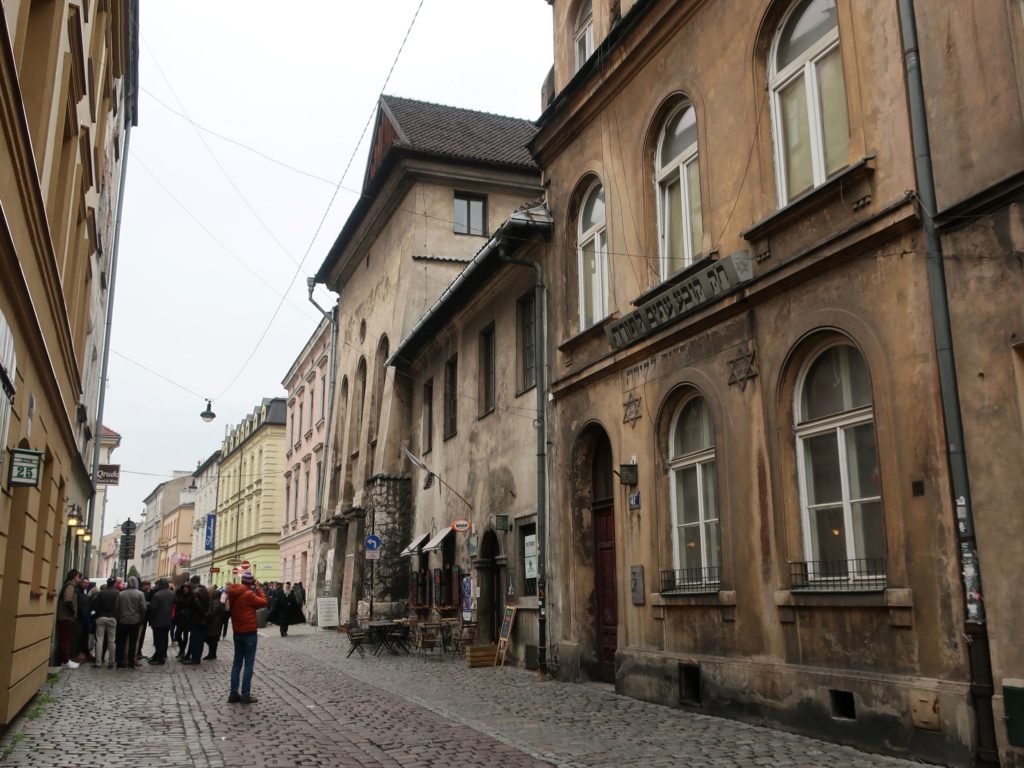
そして、シナゴーグの存在にも。
シナゴーグとはユダヤ人の祈りの場だ。
右の建物にユダヤ教のシンボル、ダビデの星が描かれているのがわかる。
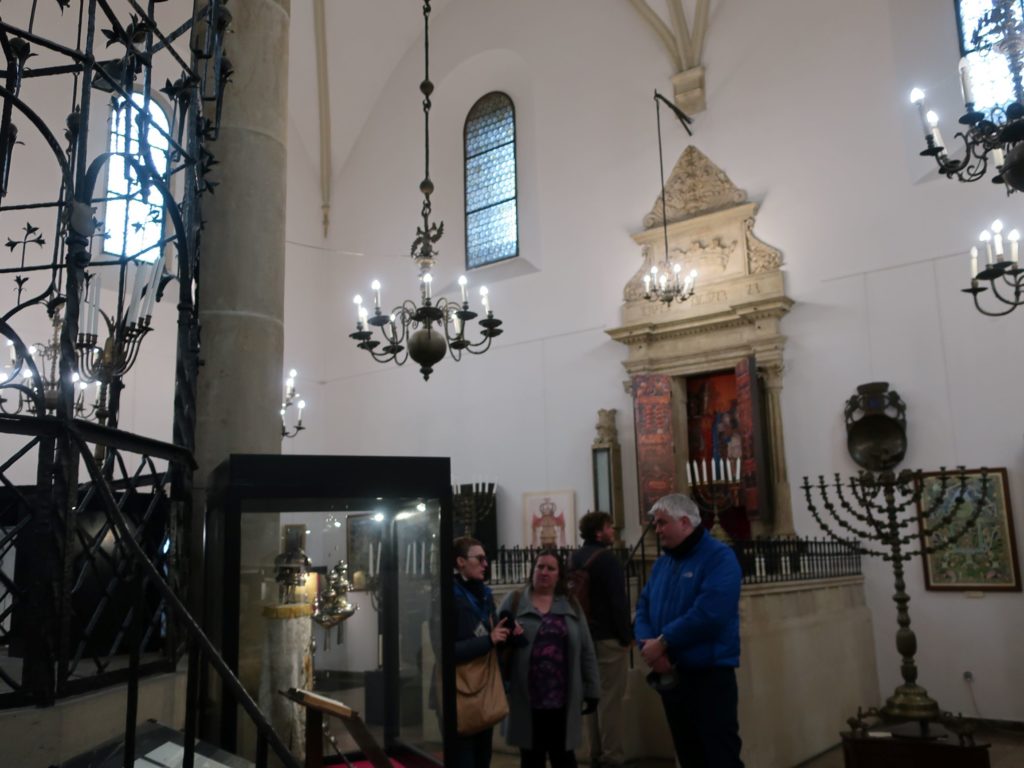
この街最古のシナゴーグ、スタラ・シナゴーグは現在博物館として利用され、当時のユダヤ人の生活の様子を展示していた。
『シンドラーのリスト』にせよ、エルサレムのホロコースト記念館で見た映像にせよ、この時代の映像はほとんど白黒で撮影されている。
『シンドラーのリスト』は戦後の映画だが、多くのシーンを白黒で撮影している。
そのシーンがとても重々しく見えたのをぼくは覚えている。
戦前、そして戦後間もない時の映像は白黒だ。
だが、ぼくが生まれて物心ついたころには、テレビはすでにカラーの時代だ。
白黒の映像となると、急に時代が違うように感じられて別の世界のように感じてしまう。
つまり、今あるぼくらの生活とは離れた、「歴史」という範疇にその映像はくくられてしまうのだ。
だから、あまり実感が湧かない。今の自分とつながった同じ世界のこととは思えない。
だが、この街を歩いていると様々な色彩がぼくの目の前に飛び込んでくる。
『シンドラーのリスト』の世界が色を持ってぼくの目の前に現れてくるのだ。
色の存在がぼくの思いを呼び立てる。
ここでぼくと同じように生きて、生活していた人がいた。
そして悲劇に巻き込まれ、命を落としていった人がたくさんいたのだと。
歴史を見守ってきた中世の街並みが、そうぼくに語りかけてくるようだった。
続く
次の記事はこちら
あわせて読みたい
クラクフ旧市街のシンボル、聖マリア教会~聖母マリア信仰と一神教 ポーランド編②
旧市街の中央広場にはこの街のシンボルたる聖マリア教会があります。
この教会は1222年に建てられ、聖母マリアの祭壇が中央に飾られていることで有名です。
さて、聖マリア教会に入場してみましょう。
外から見ても圧倒的な大きさでしたが、中の様子は一体どのようになっているのでしょうか。
前の記事はこちら
あわせて読みたい
イスラエル出国と悪名高いベングリオン空港~イスラエルを終えて イスラエル編㉒
今回利用する空港はベングリオン空港。この空港は世界一出国審査が厳しいということで悪名高い。
普通の空港なら出発の2時間ほど前に空港に着けばいいところを、この空港は3時間前までには必ず着いていなければならないという条件がまずあります。
それに間に合わないとものすごく怒られるという。
それもそのはず、検査が何重にも行われ、荷物の中身もかばんを開けて全部チェックするという徹底ぶり。
そしてイスラエルで何をしていた?とかその荷物は誰がパッキングした?などたくさんの質問を受けることになる。
少しでも怪しいと別室送りになるというなんとも不安にさせるような情報もあった。
そんなベングリオン空港にこれから向かいます。
関連記事
あわせて読みたい
ポーランド旅行記おすすめ記事一覧~アウシュヴィッツを訪ねて【僧侶上田隆弘の世界一周記】
アウシュヴィッツは、私の中で「宗教とは何か、人間とは何か」という問いを考える上で絶対に行ってみたいと思っていた場所でした。
私はユダヤ人が建国したイスラエルという国を見た直後にこの国を訪れることになりました。これはアウシュヴィッツを考える上で非常に重要な意味があったと私は感じています。
ポーランド編ではそんな私が目で見て、全身で感じたアウシュビッツを僧侶ならではの視点でお話ししていきます。
あわせて読みたい
死の収容所アウシュヴィッツを訪れる①~ホロコーストから学ぶこと ポーランド編④
2019年4月14日。
私はポーランド最大の目的地、アウシュヴィッツに向かいました。
幸い、朝から天候にも恵まれ、前日までの凍てつくような寒さも少し和らいだようだ。
クラクフのバスターミナルからバスでおよそ1時間半。
アウシュヴィッツ博物館前で降車します。
この記事では私のアウシュヴィッツでの体験をお話しします。
あわせて読みたい
死の収容所アウシュヴィッツを訪れる②~ナチスとユダヤ人の処遇 ポーランド編⑤
ナチスがユダヤ人をどのように扱ったのかというのは博物館の展示でも大きなテーマとして取り上げられています。
「人間の本質が極めて特異な形で現れたのがホロコースト。」
エルサレムの「ヤド・ヴァシェム」でガイドさんが言っていた言葉です。
だからこそ、ここアウシュヴィッツで学んだことを「ここで悲惨なことがあったのだ」で終わらせてはなりません。
あわせて読みたい
アウシュヴィッツのガス室で感じた恐怖~「普通であること」の恐さに戦慄する ポーランド編⑥
アウシュヴィッツに実際に行って、私はどんな思いを抱くのだろうか。
旅の前にはそんなことをよく考えていた。
では、実際私はここに来て何を感じたのか?
それは「何も感じないこと」の恐怖であった。アウシュヴィッツは「普通の場所」だった。だがそのことに私は戦慄を感じたのでした
あわせて読みたい
アウシュヴィッツと『歎異抄』~親鸞の言葉に聴く ポーランド編⑦
アウシュヴィッツはあまりに強烈な体験だった・・・
しばらくは何もする気が起きませんでした。
いや、何もできなかったと言う方が正しいのかもしれません。
ですが、そんな空っぽになってしまったかのような頭の中に、ふとよぎるものがありました。
「さるべき業縁のもよほさば、いかなるふるまいもするべし」
そう。以前エルサレムのホロコースト記念館、ヤド・ヴァシェムの記事でもご紹介した『歎異抄』の言葉でした。
あわせて読みたい
ユダヤ教の聖地~嘆きの壁に触れる イスラエル編③
オリーブ山からエルサレムの街を眺めた私は、いよいよ城壁内の旧市街へと足を踏み入れます。
そして私が最初に訪れたのはユダヤ教の聖地、嘆きの壁。
私はここで不思議な感覚を感じたのでありました。
あわせて読みたい
ユダヤ教の安息日、エルサレムの嘆きの壁の祈りに心が震えた! イスラエル編⑨
ユダヤ教徒にとって、毎週金曜夕方から土曜日の夕方までは安息日あるいはシャバットと呼ばれる特別な1日。
そしてシャバットの夜、すなわち金曜の夜は嘆きの壁でのお祈りはピークを迎えます。
というわけで、私もその夜、嘆きの壁に行ってみることにしたのでした。
そしてそこで私はその祈りに度肝を抜かれたのでありました。この記事ではその時の体験をお話ししています。
あわせて読みたい
マサダ要塞とエルサレム陥落の歴史~ユダヤ人迫害の悲劇と殉教の物語 イスラエル編⑪
この記事ではイスラエルの砂漠にある世界遺産マサダ要塞を紹介していきます。
マサダ要塞はエルサレムから車で1時間半弱、エルサレムの南側にある要塞です。そのすぐそばには死海があり、エルサレムからの道はこの死海に沿って進むことになります。
ユダヤ教の聖地であるこのマサダ要塞、ここはユダヤ人とローマ帝国の歴史を知る上でも非常に重要な地です。
あわせて読みたい
エルサレム・ホロコースト記念館(ヤド・ヴァシェム)を訪ねて イスラエル編⑭
イスラエルの次の目的地はポーランドのクラクフ。そう、私はこの後アウシュビッツを見に行くのです。この記事ではそんなヤド・ヴァシェムでの体験をお話ししていきます。
あわせて読みたい
ベツレヘムとパレスチナ自治区~分離壁に囲まれた町 イスラエル編⑯
この日、私はエルサレムから移動し、パレスチナ自治区のベツレヘムへと向かいました。
ベツレヘムはキリスト降誕の地として有名ですが、今この街はイスラエルによって完全に隔離された街となっています。
私はその分離壁を目の前にし、パレスチナ問題の根深さを痛感することとなりました。









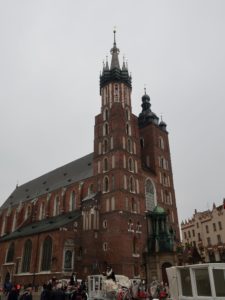
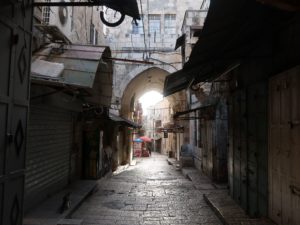
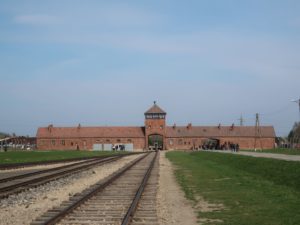
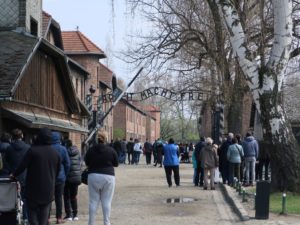
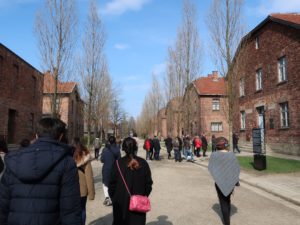

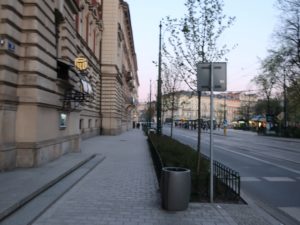
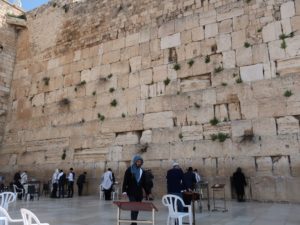
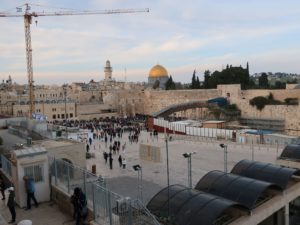
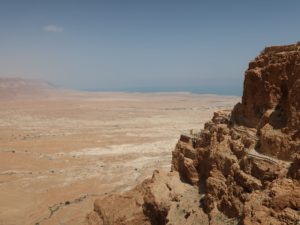
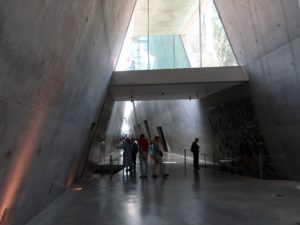
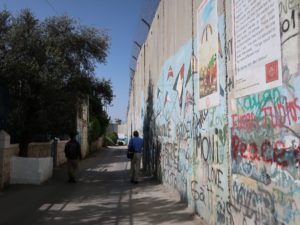
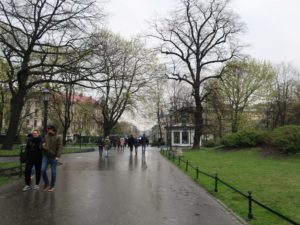
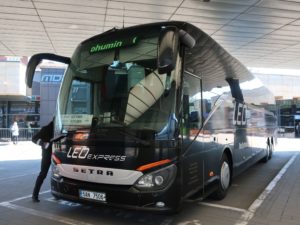
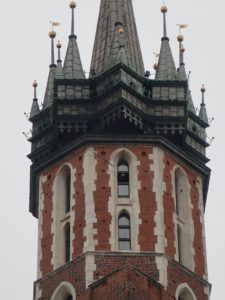
コメント